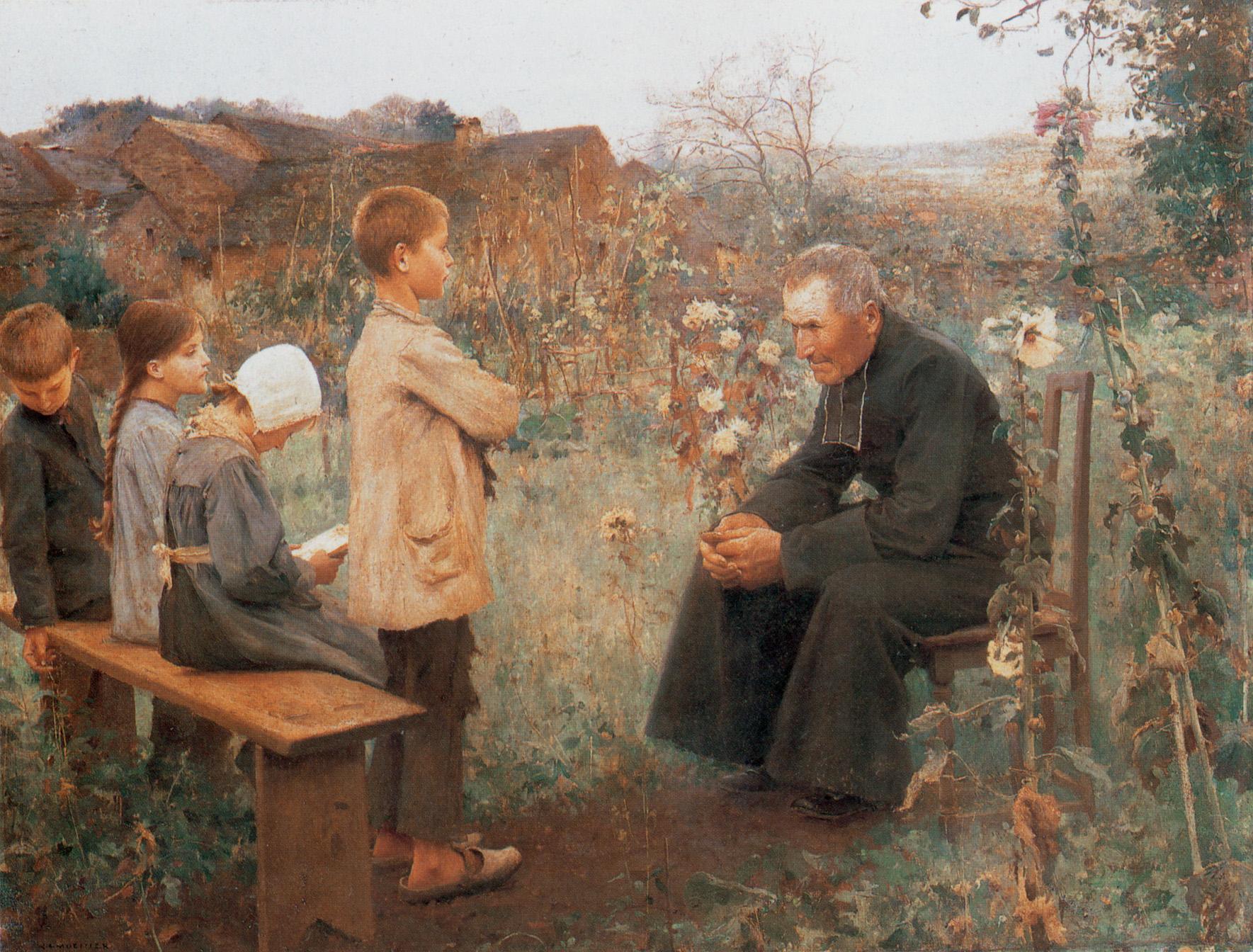
9 minute read
Sacred Scripture
By Jo Briscoe
Sacred Scripture
Advertisement
As our Catechism informs us, “God is the author of Sacred Scripture. The divinely revealed realities, which are contained and presented in the text of Sacred Scripture, have been written down under the inspiration of the Holy Spirit. For Holy Mother Church, relying on the faith of the apostolic age, accepts as sacred and canonical the books of the Old and the New Testaments, whole and entire, with all their parts, on the grounds that, written under the inspiration of the Holy Spirit, they have God as their author, and have been handed on as such to the Church herself…. Sacred Scripture must be read and interpreted in the light of the same Spirit by whom it was written.”
The Canon of Scripture: It was by the apostolic Tradition that the Church discerned which writings are to be included in the list of the sacred books. This complete list is called the Canon of Scripture. It includes 46 books for the Old Testament and 27 for the New. Our Catechism informs us that “the Second Vatican Council indicates three criteria for interpreting Scripture in accordance with the Spirit who inspired it:-
The Catechism Lesson by Jules-Alexis Meunier
1) Be especially attentive to the content and unity of the whole Scripture which is God’s plan. 2) Read the Scripture within the living tradition of the whole Church. Sacred Scripture is written principally in the Church’s heart, rather than in documents and records, for the Church carries in her Tradition the living memorial of God’s Word, and it is the Holy Spirit who gives her the spiritual interpretation of the Scripture. 3) Be attentive to the analogy of faith. By ‘analogy of faith’ we mean the coherence of the truths of faith among themselves and within the whole plan of Revelation”. It may sometimes, perhaps, appear that it is easier for us to learn more from the New Testament than from the Old Testament – perhaps we are drawn in this way by the fact that the central object of the New Testament is the life of Jesus Christ: “his acts, teachings, Passion and glorification, and his Church’s beginnings under the Spirit’s guidance” as stated in our Catechism. Also, the New Testament incorporates the Gospels which are the heart of all the Scriptures ‘because they are our principal source for the life and teaching of the Incarnate Word, our Saviour’. The fourfold Gospel holds a uniqu place in the Church, as is evident both in the veneration which the liturgy accords it and in the surpassing attraction it has exercised on the saints at all times: “There is no doctrine which could be beter, more precious and more splendid than the text of the Gospel. Behold and retain what our Lord and Master, Christ, has taught by his words and accomplished by his deeds.” Christians now read the Old Testament in our time, in the light and knowledge of Christ crucified and risen. However, the Old Testament retains its own intrinsic value as Revelation reaffirmed by our Lord himself. Besides, the New Testament has to be read in the light of the Old. The New Testament lies hidden in the Old and the Old Testament is unveiled in the New.
The Catechism states: “The Church has always venerated the divine Scriptures as she venerated the Body of the Lord – both nourish and govern the whole Christian life. ‘Your word is a lamp to my feet and a light to my path’.” However, the Old Testament is an indispensable part of Sacred Scripture. Its books “are divinely inspired and retain a permanent value, for the Old Covenant has never been revoked.” The Catechism states ‘”these writings are a storehouse of sublime teaching on God and of sound wisdom on human life, as well as a wonderful treasury of prayers; in them, too, the mystery of our salvation is present in a hidden way. Christians venerate the Old Testament as the true Word of God. The Church has always vigorously opposed the idea of rejecting the Old Testament under the pretext that the New has rendered it void.”
I quote from Pope Benedict XVI ‘The Spirit of the Liturgy’: “It is precisely when we read the New Testament in terms of cultic theology that we see how much it is bound up, in its deepest implications, with the Old. The New Testament corresponds to the inner drama of the Old. It is the inner mediation of the two elements that at first are in conflict with one another and find their unity in the form of Jesus Christ, in his Cross and Resurrection. What at first seems to be a break, turns out, on closer inspection, to be a real fulfilment, in which all the paths, formerly followed, converge.”
A lot of pleasure, inspiration and interest can be gained by paying attention to specific stories, each with different meanings and enlightenment. There is a reading from Ezekiel (of which I am very fond) which describes the basis of the story of the vision of Ezekiel of the Temple in fine detail. This specific story, technically and geographically, always captures my imagination and illustrates in detail the root of the story and its analogy with the Garden of Eden many years previously. I will quote from the Daily Readings: from the “The angel brought me to the entrance of the Temple, where a stream came out from under the Temple threshold and flowed eastwards, since the Temple faced east. The water flowed from under the right side of the Temple, south of the altar. He took me out by the north gate and led me right round outside as far as the outer east gate where the water flowed out on the right-hand side. The man went to the east holding his measuring line and measured off a thousand cubits; he then made me wade across the stream; the water reached my ankles. He measured off another thousand and made me wade across the stream again; the water reached my knees. He measured off another thousand and made me wade across again; the water reached my waist. He measured off another thousand; it was now a river which I could not cross; the stream had swollen and was now deep water, a river impossible to cross. He then said, ‘Do you see, son of man?’ He took me further, then brought me back to the bank of the river. When I got back, there were many trees on each bank of the river. He said, ‘This water flows east down to the Arabah and to the sea;
and flowing into the sea it makes its waters wholesome. Wherever the river flows, all living creatures teeming in it will live. Fish will be very plentiful, for wherever the water goes it brings health, and life teems wherever the river flows. Along the river, on either bank, will grow every kind of fruit tree with leaves that never wither and fruit that never fails; they will bear new fruit every month, because this water comes from the sanctuary. And their fruit will be good to eat and the leaves medicinal.’ The word of the Lord.
And here is a map of Ezekiel’s Temple – which also inspires me!
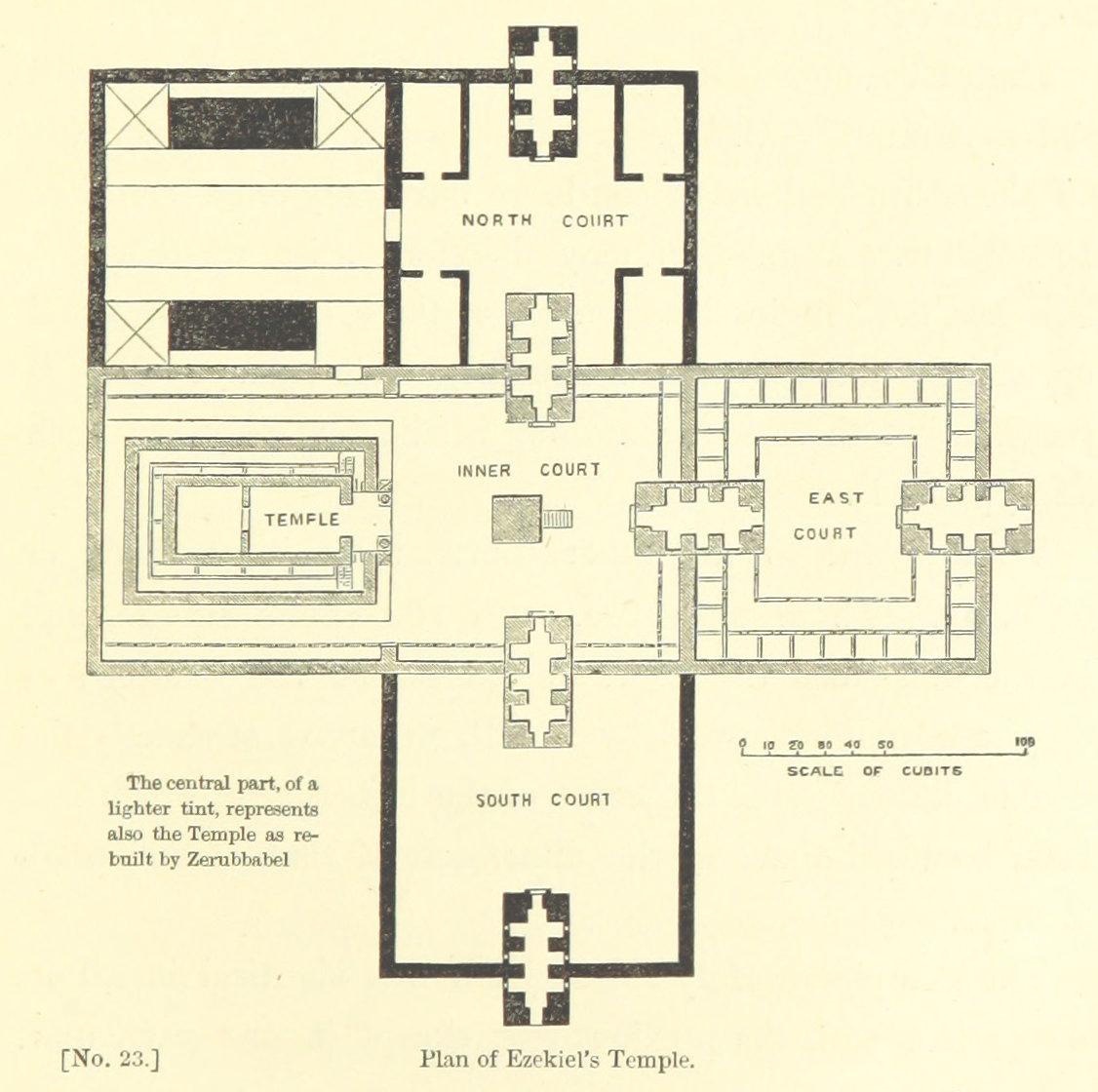
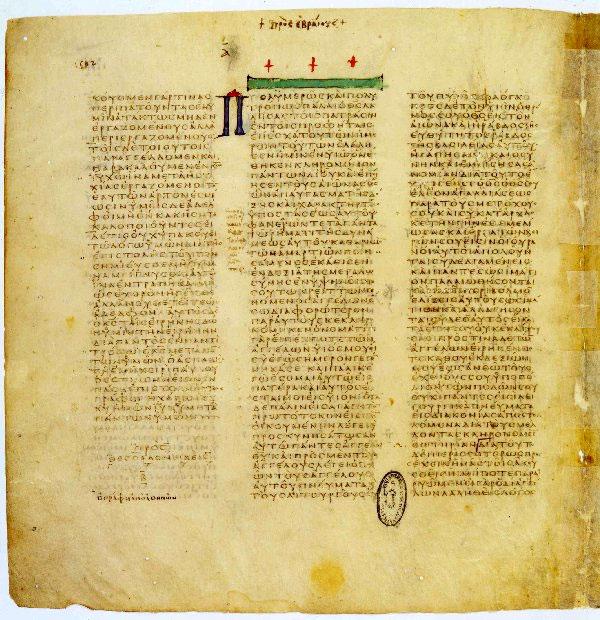
A page from Codex Vaticanus - one of the oldest copies of the Bible
The First Temple was built by King Solomon the son of King David in 957 BC and destroyed by the Babylonians in 586 BC, rebuilt in 516 BC and destroyed by the Roman Empire in 70 CE (or AD) which came to be regarded by early Christians to be a divine act of punishment for the sins of the Jewish people. The Temple was never rebuilt after this date. The Temple Mount lost its significance for Christian worship with the Christians considering it a fulfilment of Christ’s prophecy. It was to this end, proof of a biblical prophecy fulfilled and of Christianity’s victory over Judaism with the New Covenant (Jesus’ confirmation of the Commandments) [another connection between the Old and New Testaments!], that early Christian pilgrims also visited the site. The site eventually became neglected - the Temple Mount especially - when a Jewish attempt to rebuild the Temple was destroyed by an earthquake in 363, whilst Christian worship in Jerusalem shifted to the Church of the Holy Sepulchre and Jerusalem’s centrality was replaced by Rome.
The writings of a number of the prophets were, of course, visions, not least in the Temple or by an altar, but the visions of Ezekiel are particularly dramatic. Even so, the writings indicate more the relationships in worship between the people and our God than the building in which sacrifices took place for so-called worship! For example, the most ominous sign of all is that the glory of God rises up from its place in the Temple and moves outside the city, leaving the city to its fate! In fact, the final verse of the book well expresses Ezekiel’s theology of the divine presence as the city is renamed. “And the name of the city from that time on shall be. The LORD is There”. Also the description of the many waterways and their positions within the Temple structure indicate the importance to our lives of water – right from our actual baptism – we could not live without water. This is another example of the meaning being our relationship with God, rather than a structure of a building.
Though some Christians believe that the Temple will be reconstructed before, or concurrent with, the Second Coming of Jesus, pilgrimage to the Temple Mount is not viewed as important in the beliefs and worship of most Christians. The building was not of great importance to Jesus – he criticised the use of the Temple and he predicted its future –
however, he defined worship of God his Father in a purely spiritual sense; unrelated to any type of building. Jesus carried this theory right through to his eschatology teaching as well. These words of Jesus followed him to his trial and crucifixion, where the crowd stated “We heard him say, ‘I am going to destroy this Temple made by human hands, and in three days build another, not made by human hands.’” Meaning, of course, that his aim was to teach the truth from God his Father to absolutely everyone – nothing whatsoever to do with an actual building.
The New Testament recounts the story of a Samaritan woman asking Jesus about the appropriate place to worship, Jerusalem or the Samaritan holy place, to which Jesus replies: “Woman, believe
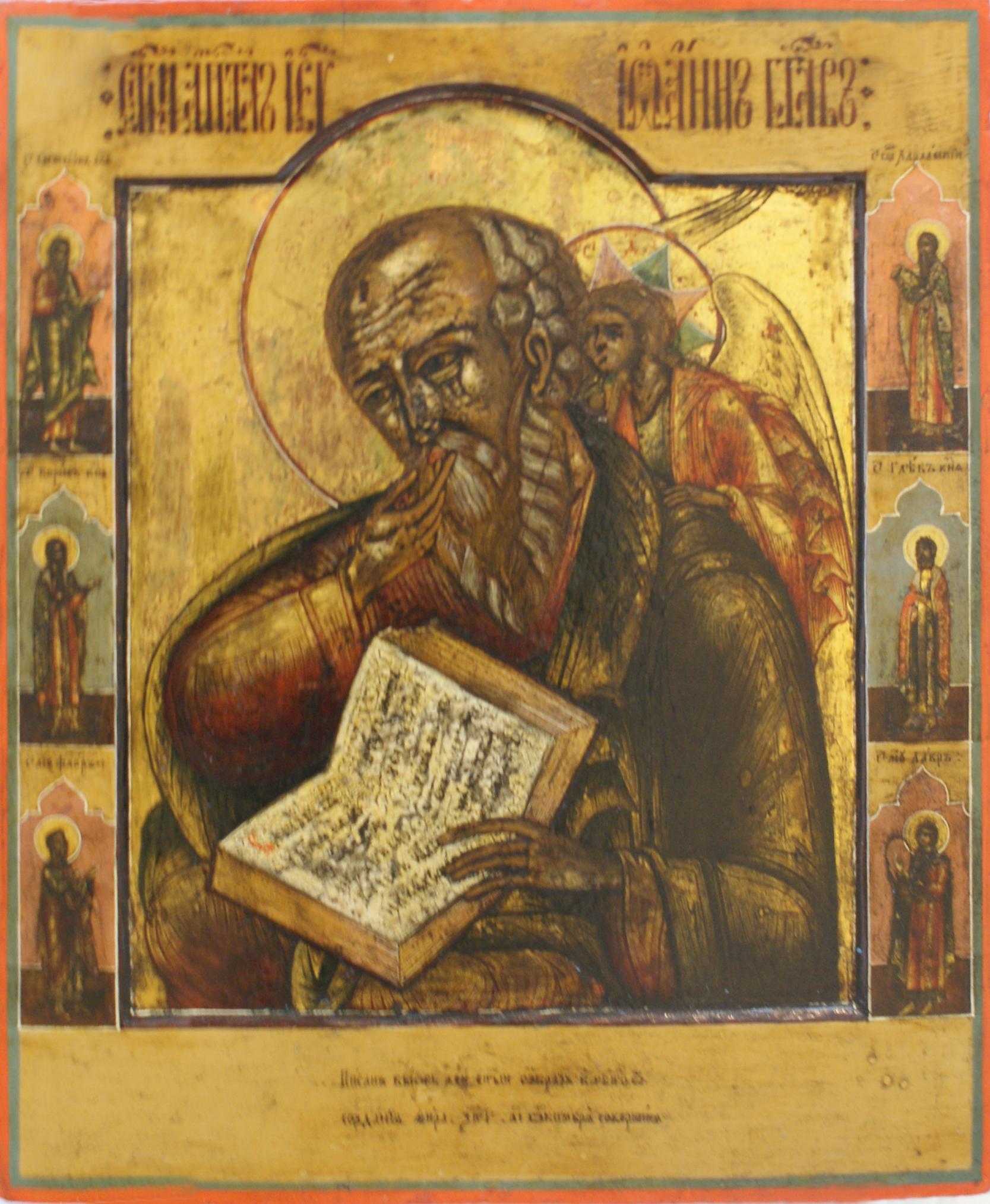
An icon of John the Theologian
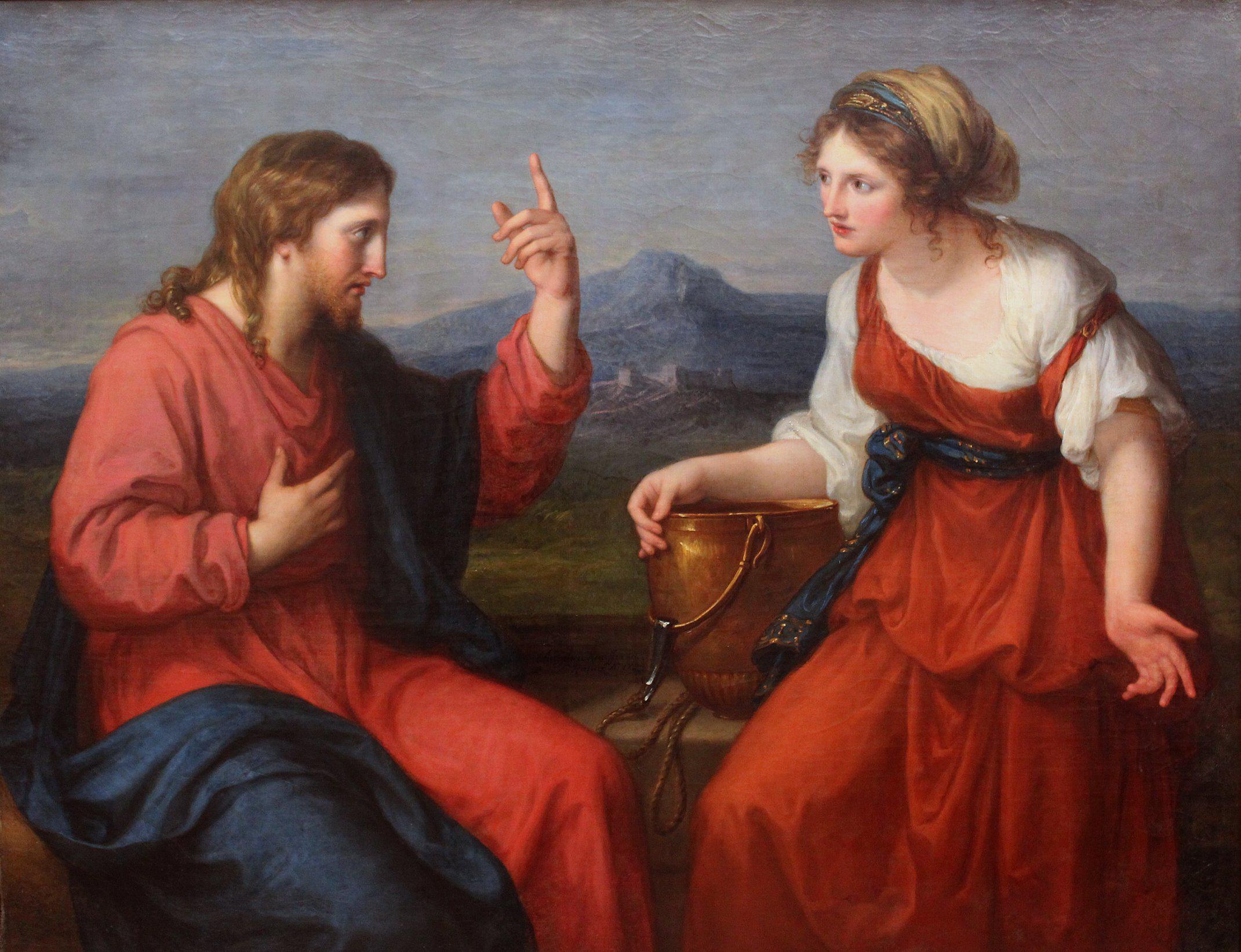
The Water of Life Discourse between Jesus and the Samaritan Woman at the Well by Angelika Kauffmann, 17–18th century
me, the hour is coming when neither on this mountain nor in Jerusalem will you worship the Father. You worship what you do not know; we worship what we know, for salvation is from the Jews. But the hour is coming, and is now here, when the true worshipers will worship the Father in spirit and in truth, for the Father is seeking such people to worship him. God is spirit, and those who worship him must worship in spirit and truth”. The words of Jesus himself speaking the very words (in differing form) to those of Ezekiel “the glory of God rises up from its place in the Temple and moves outside the city…” A good example of the connections between Ezekiel’s Old and Our Lord’s New Testaments!










